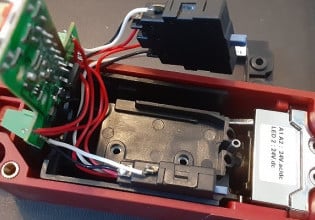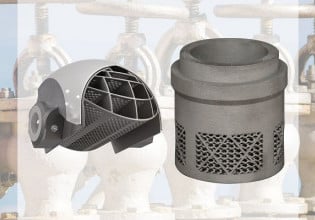Know Your Phase: How and When to Use a Motor and Phase Rotation Tester
Connecting a new motor without knowing the phase rotation of the electrical supply can cause damage to expensive equipment. By using a 3-phase rotation meter, you can save yourself time and money.
Figure 1. 3-phase rotation testers, like the Amprobe PRM-6, inform operators of the correct connection order for proper motor rotation. Image used courtesy of Amprobe
3-phase Motors
Many industrial motors require three-phase (3-phase) power and with the three phases being 120° apart, it is important to be sure which conductor is connected to which terminal on the motor, otherwise the motor will rotate in a different direction than was expected.
A 3-phase motor is highly efficient and works similarly to a single-phase (1-phase) motor. Instead of using a start capacitor, however, the motor makes use of alternating phases, and because the phases are alternating, the motor might turn clockwise or counterclockwise, depending on how the three phases are connected.
On a new motor that is not connected to anything, this might not be a problem, but if servicing a motor, or connecting a motor that is already mechanically connected, a motor operating in the opposite direction could cause other damage downstream of the motor.
Luckily, there are instruments specifically for testing which way the phases are rotating and will inform the operator of the correct connection order for the proper motor rotation.

Figure 2. In 3-phase power, each current peaks when the other two don’t, meaning power is always supplied to the load. Image used courtesy of Vertiv
How To Use A 3-phase Rotation Meter
Just like volt meters, there are numerous rotation meters on the market for a variety of voltages and styles. A common style used in industry is the probe style which contains three probes for the three phases, some LED indicators, and sometimes an LCD display.
The probes are connected to the three test points at the electrical source, and when the unit and the power source are switched on, the instrument will display the rotation of the phases and sometimes the measured voltage. Just like an electrical meter, it is important to make sure your meter can withstand the amount of electrical energy being tested.
Some meters can test how the motor should be connected by turning the motor shaft while the meter is connected and the main power is disconnected. The Amprobe PRM-6, for instance, has a wireless feature where the unit is simply placed onto a running motor and the rotation is displayed on the LCD readout. Not all motors spin slowly, and the output shaft is commonly buried in machinery.

Figure 3. There are several steps to consider before disconnecting a motor that needs to be serviced. Image used courtesy of Mika Baumeister
When To Use A 3-phase Rotation Meter
Industrial equipment is not always shiny and clean, in fact, it is not uncommon for markings, identifiers, or labels to become worn off or missing entirely over time. It is for these reasons we often rely on tools like the 3-phase rotation meter.
Before disconnecting a motor that needs to be serviced, you need to determine the rotation of the motor. This step can sometimes be as simple as witnessing the motor work or checking the nameplate. Other times, the motor might be incorporated into machinery where the rotation cannot be visible. In this case, use a non-contact meter to determine the rotation before disassembling the motor.
Once the rotation is determined, check the phase rotation at the power source. Don’t assume that the labels on the conductors are correct—confirm with your meter.
Now you know the phase rotation for the incoming voltage and the rotation the motor should be after the new motor is connected. The last step is to check the new motor windings for the correct configuration of the three phases. Connect the leads from your rotation meter and rotate the motor in the direction you would like it to go. If the rotation matches your meter’s indicators, then that is the order your conductors need to be connected in. If your meter is showing the opposite direction, then swap any two leads. Always ensure you know which way the motor will turn when powered on to avoid costly damage to downstream equipment.

Figure 4. The Fluke 9040 Phase Rotation Indicator. Image used courtesy of Fluke
When Not To Use A 3-phase Rotation Meter
Phase rotation meters are a great tool but have a very specific purpose. They can only be used on 3-phase motors or 3-phase power sources and should only be used to determine the phase direction before connecting electrical devices. Most of the time, the meter will only indicate rotation or label the individual phases L1, L2, and L3. Sometimes the meter will also show the measured voltage.
Knowing Your Phase
As you can see, it is important to know the proper phase order of the power source before connecting electrical devices and to know which way the motor will spin once connected to the power source. By using a 3-phase rotation meter, you can end up saving yourself time, money, and a lot of headache.
It is important to understand the tools that can ‘phase’ even the most experienced technicians and remove and look of frustration from your ‘phase’, but don’t worry, we’ll ‘phase’ out this pun before it gets out of control.







